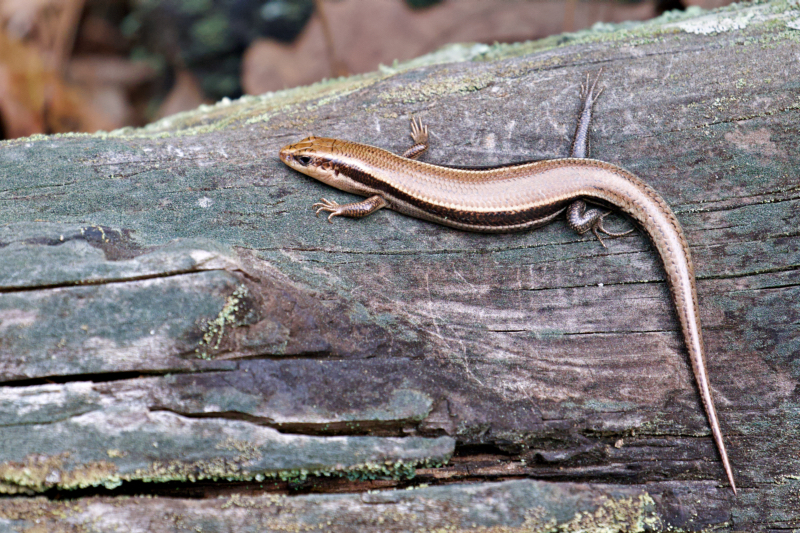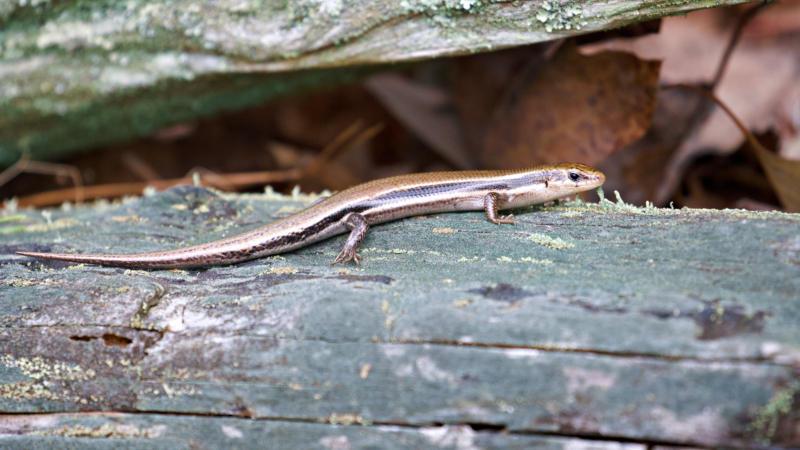Spring is a magical time for nature lovers and wildlife photographers alike. As the days grow longer and the temperatures rise, Arkansas comes alive with the sounds and sights of nature waking from its winter slumber. One of the first signs of this seasonal shift is the appearance of Skinks—particularly the vibrant and elusive Five-lined Skink.

First Skink Sighting of the Season
During a recent hike in the Ouachita Mountains, I was lucky enough to spot one of these fascinating reptiles basking on a sunlit log. This moment reminded me why I always keep my gear ready during spring hikes—nature can surprise you when you least expect it.
I captured this Five-lined Skink using my Fujifilm X-T3 paired with a Canon EF 100-400mm f/4.5-5.6L IS II lens, connected via the Fringer EF-FX Pro adapter. This setup gives me the flexibility to photograph skittish wildlife without getting too close and disturbing them.
Skinks: Tiny Guardians of the Ecosystem
Skinks may be small, but their role in the ecosystem is anything but. These active little lizards feed on insects and other small invertebrates, helping control pest populations naturally. In early spring, they emerge from their winter hiding places, eager to soak up the sun and begin foraging again.
The Five-lined Skink is especially striking, with its sleek body, shiny scales, and electric blue tail (in juveniles). These quick-moving reptiles are a joy to watch—and a challenge to photograph!

Wildlife Photography in the Spring
Photographing a Skink in the wild requires a blend of patience, speed, and a bit of luck. For this encounter, I went handheld with my gear, relying on my BlackRapid camera strap for extra stability as I maneuvered quietly to get closer. Every movement had to be slow and deliberate to avoid spooking my subject.
After a few careful adjustments and some silent moments of waiting, I managed to grab several crisp shots that really showcase the Skink’s beauty.
Embracing the Spring Photography Season
Spring in Arkansas is a dream for wildlife photographers. Whether you’re hiking through mountain trails or exploring local parks, this season is full of photo opportunities. From Skinks to songbirds, and possibly even young mammals emerging for the first time, there’s always something incredible to capture.
So, grab your camera, hit the trails, and keep your eyes open. The natural world is waking up—and it’s ready for its close-up.
Camera Settings For First Photo
- AV Mode
- Aperture: f5.6
- ISO: 1600
- Shutter speed: 1/850 sec.
- Focal Length: 400 mm
Camera Settings For Second Photo
- AV Mode
- Aperture: f5.6
- ISO: 1600
- Shutter speed: 1/680 sec.
- Focal Length: 400 mm
